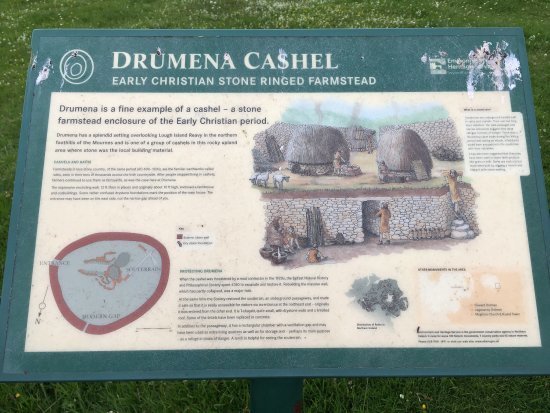
Details
The Drumena Cashel is located between the towns of Castlewellan and Kilcoo, on a hill above the Lough Island Reavy water reservoir, in County Down, Northern Ireland. It is an oval stone fort, 40 x 32 m in diameter, reconstructed from excavation results in the mid-1920s, based on finds from the early Christian period (5th-11th centuries).
The enclosing dry stone wall has a thickness of 2.7 to 3.6 meters and is over two meters high. Their outer and inner visible surfaces were made of smooth, in the lower area larger, stones. The wall core, however, consists of rolling stones. On the edge of the oval is a small approximately T-shaped basement made of lateral dry masonry and a flat ceiling of stone slabs. Some foundation remains, which could be parts of a building, are also preserved indoors.
Cashels are referred to on the Irish island regionally as Caher, Cathair or Dun or more generally as Steinfort (English Stonefort). These are usually round, irregular but often oval enclosures. Their dating and function is similar to that of ditches and earthen walls Raths. They are very rarely enclosed by trenches. While Raths occur in the other landscapes, the Cashels occur where trenches are difficult to create but stone material is available. The facilities were built from the Iron Age to the early Christian period. On the island there are approximately 40,000 of these or structurally similar enclosures. They look like modern animal enclosures, but their walls are much thinner and built of regular stones. Their meaning lies in the cult or social area. Cashel is also the name of a place in County Tipperary (Rock of Cashel).
| Address | Kilcoo, Kilcoo, Kilcoo, Ireland |
|---|---|
| Website |